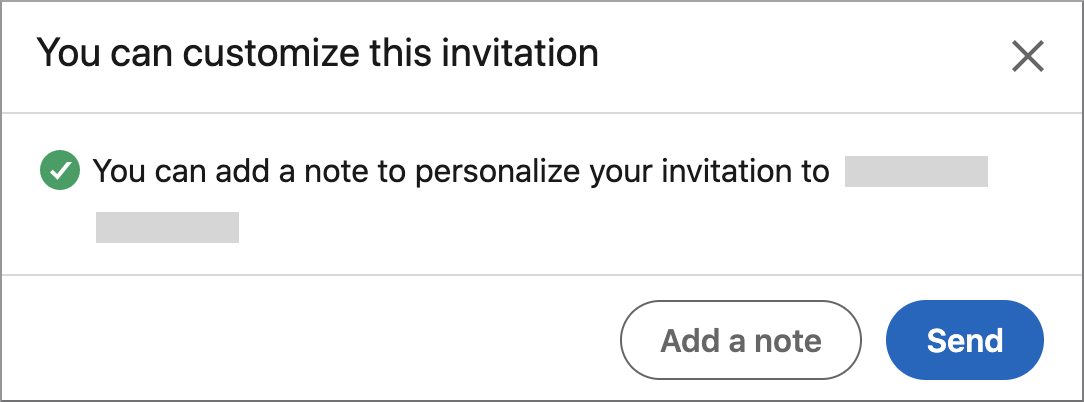

How to write compelling LinkedIn connection request messages

LinkedIn is widely used as a networking tool by both job seekers and employers. It is said that as much as 65-85 per cent of the jobs are not posted online. One way to get access to these “hidden” opportunities is to connect with people from your industry, and LinkedIn is an excellent tool to get started.
In this article, we’ll share some tips and advice to help you craft compelling LinkedIn connection request messages. We will also provide some sample templates that you can edit to suit your own situation and build a meaningful professional network online.
Are you still in the process of setting up or refining your LinkedIn profile?
Building your network on LinkedIn begins with sending out connection requests to other professionals. On any profile, when you click on “Connect” to add them to your network, you’ll see a message as follows:

While it is very easy (and tempting) to send the connection request without customizing it, adding a note will greatly increase the likelihood of your request being accepted. Personalization can help you start meaningful conversations and create memorable first impressions.
When you decide to send your connection request without a note, your recipient sees something along the lines of “I’d like to join your network.” This doesn’t provide any context as to who you are or why you want to connect and may negatively impact how many connections you are able to make.
Personalization can help you start meaningful conversations and create memorable first impressions. Notes added to connection requests have a 300-character limit, so keep your message brief and to the point. Get creative and carefully choose what you want to say. Give them a reason to connect with you.
Here are a few tips to help you customize the introduction note effectively:
Tip: Only connect with people whom you know or want to know. Sending generic requests to random people on LinkedIn can backfire. If enough people who receive your connection request indicate that they don’t know you, then you could be banned.
Always include a quick introduction (no more than a line or two) about who you are and what you do.
It’s worthwhile to mention how you came across their profile. Whether you met them at a networking event or if you were simply searching for specific industry professionals, mentioning how you found them is a good way to capture their interest.
Look at their LinkedIn profile to see if there are any shared interests, groups, academic institutions, mutual connections or employers, and use that as an ice-breaker in your connection message.
Tips:
- You can check their social channels or LinkedIn posts to learn more about them. Establish a warm connection by liking, retweeting, or commenting on their posts. To add authenticity, use that as a talking point in your connection request.
- If you have mutual connections, you can ask one of them to make an introduction.
Whether you’re seeking professional advice, wanting to learn more about their work, or discover employment opportunities at their company, outlining your intentions in the connection request will help set expectations.
Tips:
- Being a newcomer in Canada, you can talk about your situation in your message, demonstrate the willingness to learn and ask them for a coffee chat or informational interview.
- Do not ask for a job in your connection message. Learn 5 tips to use LinkedIn to get your next job.
Once your connection request is accepted, be sure to keep the conversation alive by sending a quick thank you note. And if you haven’t done so already, ask them for a coffee chat! The more people you meet and talk to, the faster you’ll learn about local culture and industry best practices.
Lastly, as your craft your message, remember the five P’s – Your request should be:
Visit www.rapidezwriter.com for more advice. Also check our expert services.
Follow us on other social media platforms Instagram, Facebook, Youtube, Linkedin, Twitter.
#linkedin #instagram #facebook #twitter #socialmedia #marketing #youtube #business #digitalmarketing #socialmediamarketing #linkedinprofile #jobsearch #google #linkedintips #linkedinmarketing #n #career #linkedinlife #pinterest #resume #networking #entrepreneur #cv #seo #covid #jobs #b #motivation #personalbranding #bhfyp